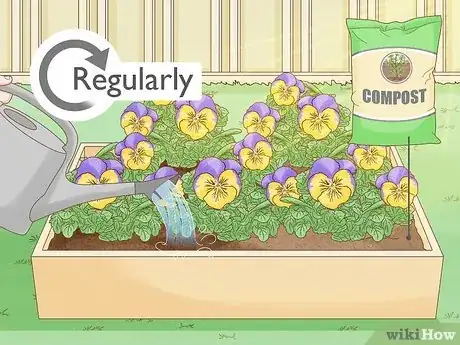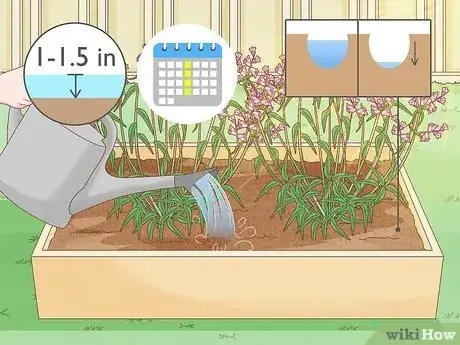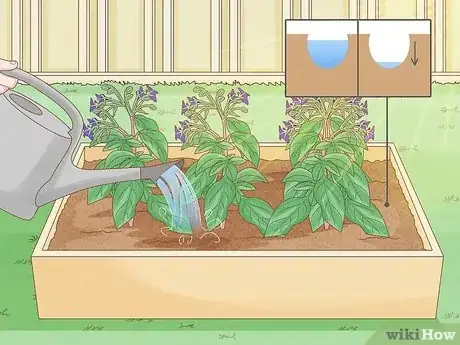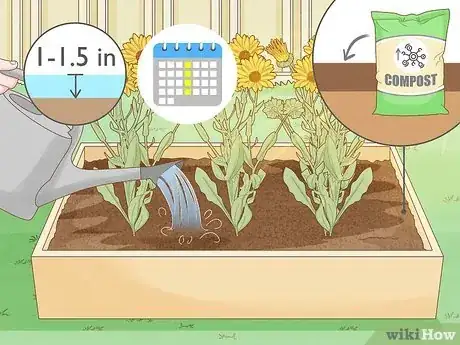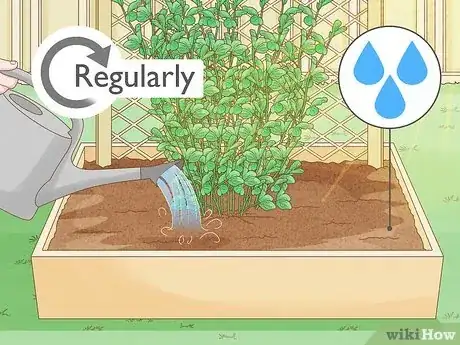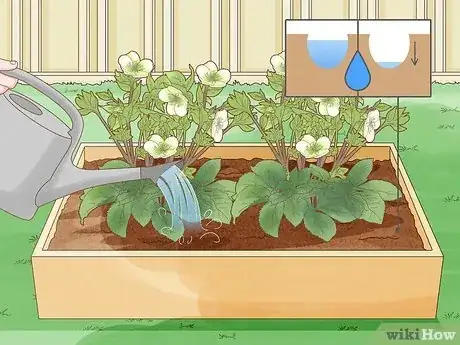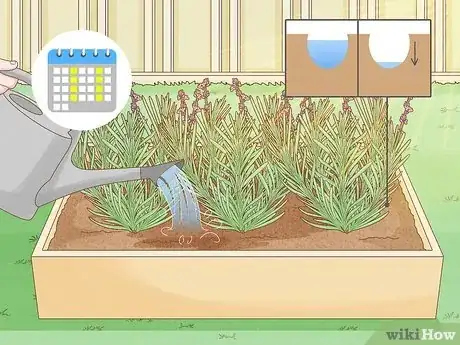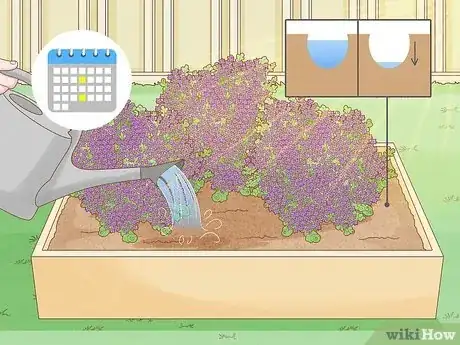This article was written by Ben Barkan and by wikiHow staff writer, Madeleine Criglow. Ben Barkan is a Garden and Landscape Designer and the Owner and Founder of HomeHarvest LLC, an edible landscapes and construction business based in Boston, Massachusetts. Ben has over 12 years of experience working with organic gardening and specializes in designing and building beautiful landscapes with custom construction and creative plant integration. He is a Certified Permaculture Designer, is licensed Construction Supervisor in Massachusetts, and is a Licensed Home Improvement Contractor. He holds an associates degree in Sustainable Agriculture from the University of Massachusetts Amherst.
There are 21 references cited in this article, which can be found at the bottom of the page.
This article has been viewed 4,594 times.
Interested in growing flowers in a raised garden bed this year? Luckily, there are tons of different flowers that flourish in raised beds. Many of them are great choices for beginners, too! Whether you're interested in growing golden-hued marigolds or ethereal sweet peas, we're here to help. Keep reading for the best flowers to plant in a raised garden bed, along with detailed care instructions to ensure that your garden is blooming in no time.
This article is based on an interview with our garden and landscape designer, Ben Barkan, owner and founder of HomeHarvest LLC. Check out the full interview here.
Steps
-
Poppies bloom bountifully and are the perfect choice for a rookie. These blossoms come in all varieties of color, including red, orange, and purple. They're also self-seeding flowers, so they'll come back on their own each year after you plant them. If you're looking for a low-maintenance, beginner-friendly flower, you couldn't go wrong with poppies.[1] X Research source
- Water: Give your poppy plant 1 inch (2.5 cm) of water per week.
- Sun: Poppies flourish in full sunlight, so make sure to pick a spot in your raised bed that gets plenty of sunshine.
- Soil: Poppies do well in well-drained soil (soil that absorbs water without remaining marshy).
-
Petunias are a wonderful option for beginners. Recognizable for their distinctive funnel-shaped blooms, these flowers are a picturesque addition to any raised garden bed.[2] X Research source If you're new to gardening, you're in luck, as these flowers are also very easy to plant and maintain.[3] X Research source
- Water: Water your petunias with about 1–1.5 inches (2.5–3.8 cm) of water once a week.
- Sun: Petunias do well in full sunlight, but can also survive in partial shade. If you're running out of spots in your raised garden bed, a slightly shady spot will do!
- Soil: Well-drained soil will provide petunias with an ideal environment.
-
Pansies can double as a pretty border surrounding your raised bed. These flowers are a super popular choice among all experience levels, as they're both easy to maintain and super lovely. Their multi-colored blooms will give your garden an extra dose of personality.[4] X Research source
- Water: Water your pansies regularly (anytime you notice the soil drying out). Water at the ground level (and not on the blooms) to avoid the spread of fungal diseases.
- Sun: Plant pansies in either full sun or partial shade.
- Soil: Pansies will do best in soil that contains rotting organic matter. Try compost for an easy, all-natural option.
-
Daylilies will bring a rainbow of color to your garden bed. These blooms come in a huge variety of hues, including pink, red, and orange. They're also perennials, which means that once you plant them, they'll come back again each season (as long as they're given the care that they need).[5] X Research source
- Water: Water your daylilies once a week. 1 inch (2.5 cm) of water will be plenty to encourage bountiful blooms!
- Sun: Daylilies do best in full sun (a minimum of 6 hours of sunlight a day) or partial shade (4 to 6 hours of sunlight a day).[6] X Research source
- Soil: Plant daylilies in well-drained soil. If you'd like to use fertilizer, go for one that is nitrogen-rich.
-
Grow penstemon for distinctive, gorgeous blooms. Also known as beardtongues, penstemon flowers give your raised bed a unique look. The flowers' trumpet-shaped blossoms will catch the eye of anyone who walks by, and they'll even bring hummingbirds, bees, and butterflies to your yard.[7] X Research source
- Water: Give your penstemon plant 1 inch (2.5 cm) of water a week.
- Sun: Plant penstemon in full sun for the best results.
- Soil: Penstemon flowers need well-drained soil to grow.
-
Gorgeous orange marigolds will bring butterflies to your raised bed. If you plant these wondrously beautiful blooms, your garden will be the envy of the neighborhood. That's because these flowers attract butterflies and honeybees! If you want to make your raised bed a haven for precious wildlife, plant marigolds.[8] X Research source
- Water: Marigolds can withstand heat and don't need much water. Simply water the plant when you notice the soil is drying out, and water them at ground level (not directly on the blooms).
- Sun: Marigolds will grow in full or partial sunlight, which allows you to plant them throughout your raised beds (in sunny and shady spots).
- Soil: Plant marigolds in well-drained soil. Marigolds won't need extra fertilizer to grow, as too much nitrogen (a common nutrient in fertilizer) is actually bad for marigolds.
-
Opt for borage to give your raised bed a unique look. Also known as starflowers, these star-shaped blue blossoms are as striking as they are pretty. Luckily, they're also very easy to grow! A self-seeding flower, they'll grow back by themselves each year after you do the initial planting. One thing to keep in mind: though borage leaves are edible in small doses, they can potentially cause liver damage or cancer if they're a substantial part of your diet.[9] X Research source
- Water: Borage doesn't need very much water to grow. Simply water at the ground level when the soil is dry.
- Sun: Full sunlight or partial shade will both work well, so you've got options when mapping out your raised garden bed.
- Soil: Well-drained soil is ideal for borage flowers.
-
Sunflowers are an eyecatching, classic addition to a raised bed. These golden bursts of sunshine come in all types of varieties. Try growing sunflowers in that spot in your garden bed that's always under the sun. They're the perfect choice![10] X Research source
- Water: Water your sunflowers once a week. This will give them enough moisture to grow as tall as they can get!
- Sun: Sunflowers grow wonderfully in full sunlight.
- Soil: These vibrant yellow blooms do best in well-drained soil.
-
Nasturtiums offer edible blossoms with little maintenance. This delectable, edible flower blooms in just about every shade and makes a fabulous garnish in salads. If you're looking for a low-maintenance flower that's a pretty sight in both your raised bed and on your dinner plate, plant nasturtium![11] X Research source
- Water: Give your nasturtium flowers 1–1.5 inches (2.5–3.8 cm) of water a week.[12] X Research source
- Sun: Nasturium needs full sunlight.
- Soil: Plant nasturium in well-drained soil. Alternatively, these flowers can also grow equally well in clay soil.
-
Calendula can help other plants in your garden bed thrive. This flower's daisy-like blooms come in peach, yellow, and orange, and its leaves and petals are edible.[13] X Research source Calendula is also considered a companion plant, which means they can help any vegetables in your raised bed grow successfully. The flower can even ward off pests, making it one of the most magical on the list.[14] X Research source
- Water: Water your calendula flowers with 1–1.5 inches (2.5–3.8 cm) of water a week.
- Sun: This flower will do well in full sun or partial shade, so they can be planted just about anywhere in your raised bed.
- Soil: Calendula flourishes in nutrient-rich soil. Try adding some compost over the soil as fertilizer to give your flowers the nutrients they need.
-
If you're an intermediate gardener, try impatiens. Impatiens are delicate nodding flowers that come in yellow, pink, purple, and more. They require slightly more care than low-maintenance varieties, but their sophisticated beauty makes them well worth it.[15] X Research source
- Water: Regularly water your impatiens to ensure the soil is always moist.
- Sun: Impatiens respond well to partial shade, so try planting them in a part of the raised bed that gets more shade cover.
- Soil: Allow the soil to remain moist so that the impatiens can soak up all the water that they need.
-
Sweet peas are a beautiful, fragrant addition to any raised bed. These tiny blossoms grow in pink and red hues, and their fragrance carries traces of honey and orange blossom. If you want your backyard to look and smell divine, plant some sweet peas.[16] X Research source
- Water: Water the sweet peas so that the soil remains moist at all times. Sweet peas require more regular watering than low-maintenance flowers.
- Sun: Sweet peas flourish in full sun, so try planting them in a spot in your raised bed that gives your plants plenty of sunshine.
- Soil: Moist soil will boost your chances of growing a bountiful sweet pea plant.
-
Plant Hellebore in your garden bed if you'd like flowers in the winter. Hellebore is a unique flower that blooms in dusty pink, white, and burgundy. Often referred to as "Christmas roses," these flowers are perfect if you'd like a blooming garden in winter and early spring.[17] X Research source To encourage blooms, plant the flower in the fall or spring (and not in the summertime).
- Water: Hellebore needs moist, rich soil to thrive, so water the plant anytime you notice the soil is dry.
- Sun: Partial shade is perfect to encourage optimum growth.
- Soil: Hellebore does best in moist or well-drained soil.
-
English lavender is a flowering herb that attracts bees. Known for its distinctive scent, lavender is a perfect choice if you'd like to add herbs to your raised bed. The plant's tiny purple blossoms are a treat to look at, and they'll attract bees that will pollinate your flowers and help more blossom.[18] X Research source If you harvest the stalks, you can even use the plant in food, homemade beauty products, and potpourri.[19] X Research source
- Water: Water English lavender 1-2 times a week to encourage optimum growth. Avoid overwatering or leaving the soil soggy, as lavender needs a minimal amount of water to flourish.[20] X Research source
- Sun: English lavender needs full sun, so plant the herb in an area in your raised bed that gets direct sunlight.
- Soil: English lavender does best in well-drained soil. The herb can also grow in dry soil, as lavender is drought-tolerant (so it's a great choice for warmer climates).
-
Uniquely fragrant, creeping thyme is a very easy-to-grow herb. Creeping thyme grows in distinct bundles of tiny flowers and comes in colors including purple, pink, and red. The herb possesses a citrus scent and will draw pollinators like bees and butterflies to your yard. The herb is a perfect choice for a fragrant border surrounding your raised bed.[21] X Research source
- Water: This herb doesn't need a lot of water to flourish. Try watering your creeping thyme every 1-2 weeks, and make sure that the soil is not moist or marshy before adding more water.
- Sun: Creeping thyme does well in full sun.
- Soil: Keep the soil well-drained to encourage the plant to thrive.
You Might Also Like

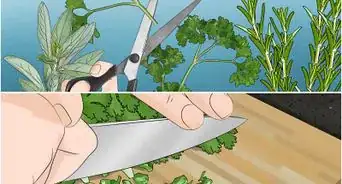
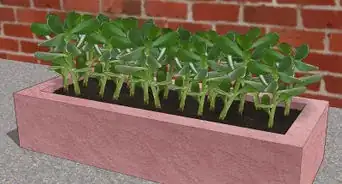

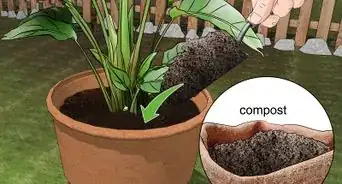



-Oven-Step-15.webp)



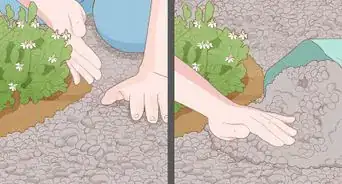
References
- ↑ https://extension.usu.edu/yardandgarden/research/seed-poppy-in-the-garden
- ↑ https://plants.ces.ncsu.edu/plants/petunia-x-hybrida/
- ↑ https://ipm.missouri.edu/MEG/2012/3/Petunia-Better-Than-Ever/
- ↑ https://www.gardenersworld.com/how-to/grow-plants/how-to-grow-pansies/
- ↑ https://hgic.clemson.edu/factsheet/daylily/
- ↑ https://garden.org/courseweb/perennials/Class3/c3p2.html
- ↑ https://plants.ces.ncsu.edu/plants/penstemon/
- ↑ https://www.almanac.com/plant/marigolds
- ↑ https://plants.ces.ncsu.edu/plants/borago-officinalis/
- ↑ https://extension.umn.edu/flowers/sunflowers
- ↑ https://plants.ces.ncsu.edu/plants/tropaeolum/
- ↑ https://hgic.clemson.edu/factsheet/growing-annuals/
- ↑ https://extension.usu.edu/yardandgarden/research/calendula-in-the-garden
- ↑ https://www.almanac.com/growing-calendula-how-grow-pot-marigold
- ↑ https://plants.ces.ncsu.edu/plants/impatiens-pallida/
- ↑ https://www.almanac.com/plant/sweet-peas
- ↑ https://ipm.missouri.edu/MEG/2019/12/christmasRose/
- ↑ http://www.gardening.cornell.edu/homegardening/scene9108.html
- ↑ https://www.naturallivingideas.com/reasons-to-grow-lavender-in-your-garden/
- ↑ https://www.almanac.com/plant/lavender
- ↑ https://plants.ces.ncsu.edu/plants/thymus-praecox/
About This Article



